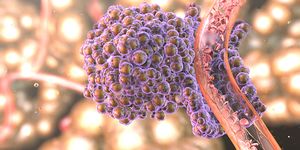Newly developed drugs can take 7-10 years to be approved in the United States, and that does not account for the many years of clinical trials that drugs go through before being brought to the FDA for approval. Less than five percent of drugs in the preclinical testing stage end up becoming marketed drugs. Although this process is long and tedious, it is also much-needed in order to prevent the release of unsafe drugs onto the market. For the first time, scientists from George Washington University have developed an innovative new system for testing drugs in the realm of cardiology with miraculously improved speed and accuracy.
The new system is called OptoDyCE, the “first fully automated platform for all-optical dynamic interrogation of cardiomyocyte electrophysiology,” meaning researchers use light to control cells, also called optogenetics. This technology is no stranger to medicine; optogenetics has been commonly used in neuroscience on and off for the past ten years. Optogenetics is new to cardiology, though, and scientists are excited about the potential of this new system to determine whether new drug candidates cause heart arrhythmias.
"This new method has the potential to vastly improve the speed at which we get safe and essential drugs to seriously ill patients," said senior author Emilia Entcheva, PhD. The study was published recently in
Nature Communications.
The new system can test more than 30,000 cardiac cells in less than ten minutes, as compared to hours and years from the previously standard process. The technology optically stimulates the cardiac cells to beat, followed by a measurement of their response to a certain drug candidate.
One of the biggest challenges with developing new medications is testing to make sure we are treating a problem without causing any cardiac toxicity,” Entcheva said. “This technology helps us to ensure that we are doing just that."
The new system uses a patient’s own blood cells, treated with experimental medication. This technology is the first high-throughput system to be compatible with heart cell tests, and it surpasses older, manual testing with probes testing individual cells.
As a preserver of time and resources, OptoDyCE can eliminate potentially dangerous drugs early in the development process so researchers won’t spend extra energy or dollars on a drug that won’t be approved by the FDA.
“[OptoDyCE] provides a way to dynamically control millions of cells simultaneously without needing to come into contact with the sample,” said PhD student and first author Aleks Klimas.
“OptoDyCE permits the fast quantification of cardiomyocytes’ electrophysiological and electromechanical response to a drug over time and space at both the cellular and global scale, to an extent that has not been achieved by any other system to date,” scientists wrote in the paper.
Source:
George Washington University









